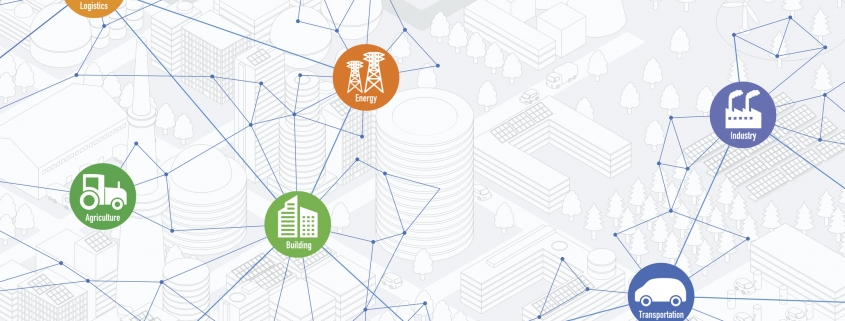How do Smart Power Grids Differ from Traditional Power Grids?
K.A.I.L.E (Kinetic Artificial Intelligent Learning Environment) is our automated AI system that manages, monitors, and regulates all the functions and operations of the circular city from transportation to agriculture. KAILE is the mainframe API data center that runs the power grids, transportation, robotic construction, health, and agriculture sectors. KAILE collects real-time data and creates algorithms that best provides resources to each individual of that populous.
On the next Prefecture Podcast, we are diving into KAILE and smart power grids. Smart power grids are essential in the digital transformation and innovation found in circular city models. How will smart power grids differ from traditional power grids? And what solutions and improvements would it make?
A traditional power grid carries energy from a power plant through a series of interconnected power lines to the consumers. Traditional power grids have almost no storage capacity, and it is purely demand driven. The energy is produced and delivered according to real-time energy demands. As a result, when there is increased strain or disruptions on the grid, blackouts can occur. Consequently, the power then has to be rerouted manually, which can take a long time depending on the complexity of the malfunction.
Smart power grids seek to solve these problems found in traditional power grids. Smart power grids enable a two-way flow of electricity and data. They will be highly sensor-driven with Internet of Things (IoT) technologies and advanced analytics provided by super AI and machine learning—which is where KAILE will come into play.
KAILE will distribute, help keep track of the energy consumed, and provide usage metrics to consumers as well as possible solutions if they need to take measures to reduce their energy consumption. IoT sensors across the grid will allow consumers to be more active in their own energy consumption and actually see the energy they consume. Do you think this type of data-sharing technology would encourage sustainable energy practices amongst the populous since they could monitor their usage?
Smart power grids are also self-healing, meaning they have the ability to detect and respond to any problems or disruptions and would ensure quick recoveries without the need for time-consuming manual rerouting. This type of self-reliance would increase energy stability, efficiency, and reliability for the population.
Another problem smart power grids would solve is storage capacity. A smart power grid would allow for energy to be stored and released when necessary, moving away from traditional demand-driven energy production. As a result, this would open the doors to using more renewable energy sources. Since some renewable energy sources have inconsistent availability, such as sun or wind, the ability to store and save that renewable energy and use it later would be a tremendous plus.
Overall, smart power grids bring increased resilience to interconnected power networks by preventing outages or disturbances. It optimizes energy, allows for renewable energy sources to be efficiently stored and used, and ensures that quality power to available to the entire populous reliably. In addition, IoT sensor technology and AI like KAILE allows the individual energy consumer to become actively involved in their energy consumption. They can monitor their energy consumption data, analytics, and find possible solutions if they need to take measures to reduce their energy usage.
Tune in for a more in-depth discussion on KAILE and power grids on the next Prefecture Podcast!





Leave a Reply
Want to join the discussion?Feel free to contribute!